Acute Otitis Media
Article Sections
Introduction
Acute otitis media (AOM) is a bacterial infection of a middle ear effusion. AOM can occur at any age but is most common in infants and young children.
Pathogenesis
The middle ear is connected to the nasopharynx via the eustachian tube. AOM occurs when otopathogens enter the middle ear and proliferate, progressing to suppuration. Several events typically precede the development of AOM:
- The patient has an underlying event (eg, viral upper respiratory infection, allergen exposure) that triggers an inflammatory response within the nasal respiratory mucosa, causing edema.
- Because the eustachian tube is also lined by respiratory mucosa, the inflammatory edema extends to this area, causing obstruction (Figure 1).
- The obstruction causes poor ventilation and negative pressure in the middle ear.
- This contributes to the accumulation of secretions that are normally produced by the middle ear mucosa, providing a rich medium for bacterial growth.
Continue Learning with UWorld
Get the full Acute Otitis Media article plus rich visuals, real-world cases, and in-depth insights from medical experts, all available through the UWorld Medical Library.
Figures
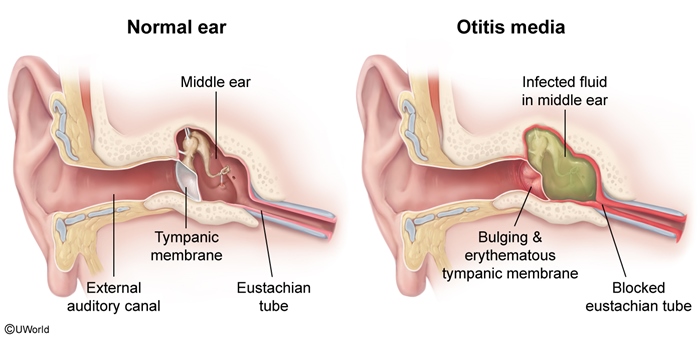
Figure 1
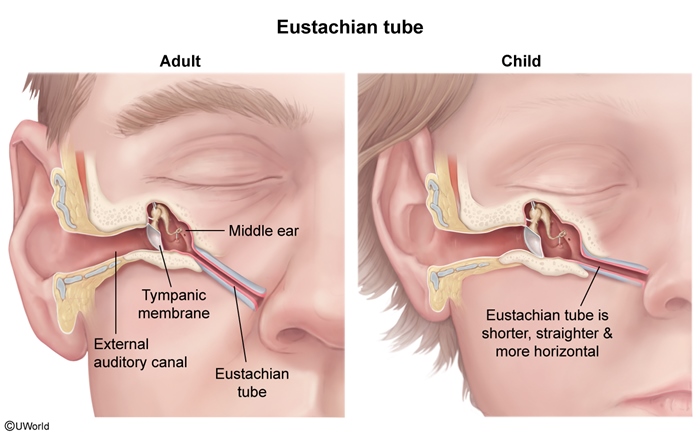
Figure 2
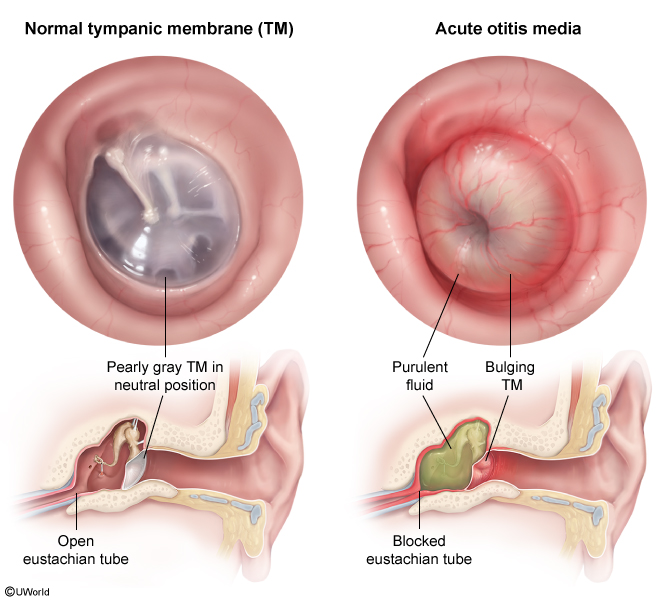
Figure 3
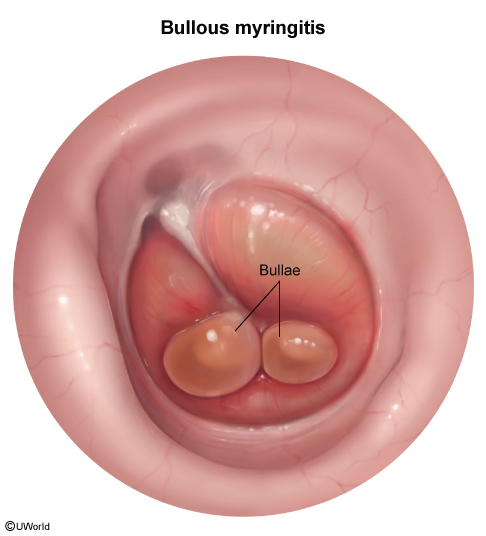
Figure 4
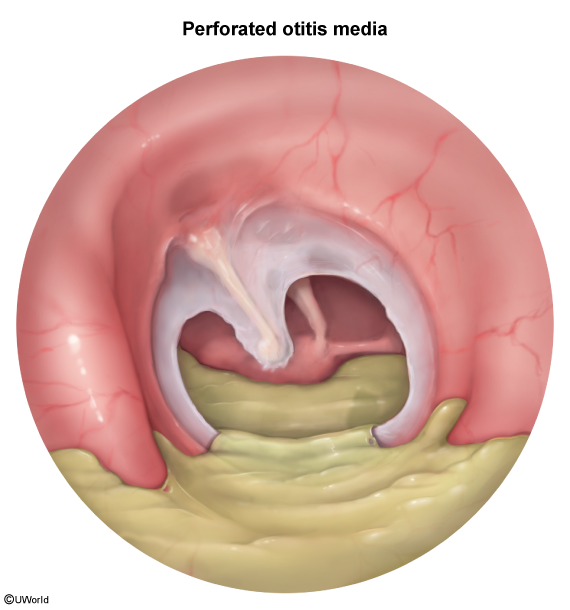
Figure 5
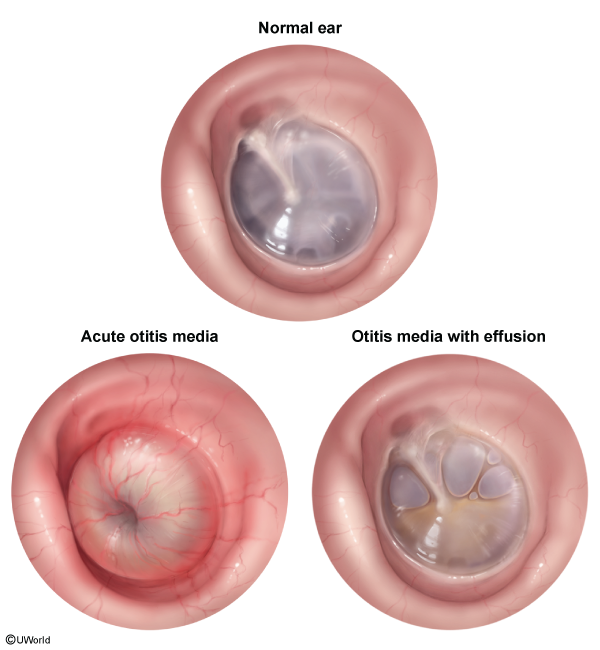
Figure 6